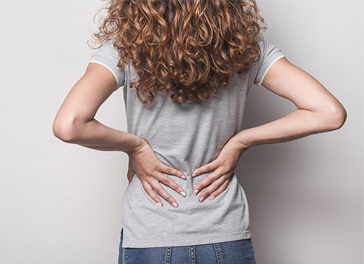It’s estimated that one in four Australians suffers from lower back pain. That’s a lot of people going about their everyday life either in some sort of discomfort or agonising pain. In fact, it’s one of the most common conditions seen by a GP.
What causes lower back pain?
While injury can result in persistent lower back pain, it’s not always the root cause. Injuries, be it through exercise, a car accident or work-related, can often lead to long-lasting lower back pain, but this only accounts for about 50% of all pain associated with this area. There are a variety of other reasons which can lead to similar pain, this includes a poor posture, an incorrect running style, stress, too little sleep, obesity and genetics can play a part.
The best way to avoid creating or exacerbating lower back pain is to be aware of what causes the pain and put measures in place to minimise the likelihood of the pain developing.
Most of the time staying active is what your back needs
For those who have never experienced lower back pain, one may think the best thing to do is to cease all activity. It has been found that bed rest for more than 4 days, rather than helping with the management of back issues, can lead to muscle atrophy, stiffness and can impair the path to recovery. Doctors find that in many cases it’s better to keep moving and staying moderately active. Therapeutic exercises are generally recommended as soon as possible to control the pain and avoid loss of muscle function.
Exercise also helps with the mental state of a patient. Mental wellbeing is a significant factor which determines how well someone recovers and maintains their recovery. The fear of recurrence, stress, depression and anxiety can cause back pain to increase and can cause a patient to relapse. Exercise can help reduce fear and avoidance behaviours. Finding suitable activity reinforces the fact that pain does not need to mean injury. A patient may experience some level of pain, but be able to function, and thereby improve their condition over time as they strengthen.
It is important that you consult your doctor before starting any exercise. Your doctor will be able to determine the best level of activity for you based on your individual circumstances.
Activity Modification
While your back is healing there are some activities are best avoided. If your work involves heavy lifting, prolonged unsupported sitting, twisting and bending you may be putting stress on your spine. Whilst you are healing it is best to speak to your doctor about how best to modify your activity to ensure you spine is given the best chance to heal.
Prevention is better than cure
More than 30% of people who have recovered from lower back pain will go on to experience more in the future. It doesn’t have to be this way. A good stretching and exercise programme can help you prevent further occurrences.
While lower back pain is common and often seems like there is no cure, there is no need to suffer, speak to the professionals and get into good stretching and exercise habits. It can make the world of difference to your daily life.
If you are suffering lower back pain, please come in and see one of the GPs at Alma Rd Medical Clinic who can help determine the best course of action. Often physio therapy will help you over come the problem and get you on the road to recovery.

